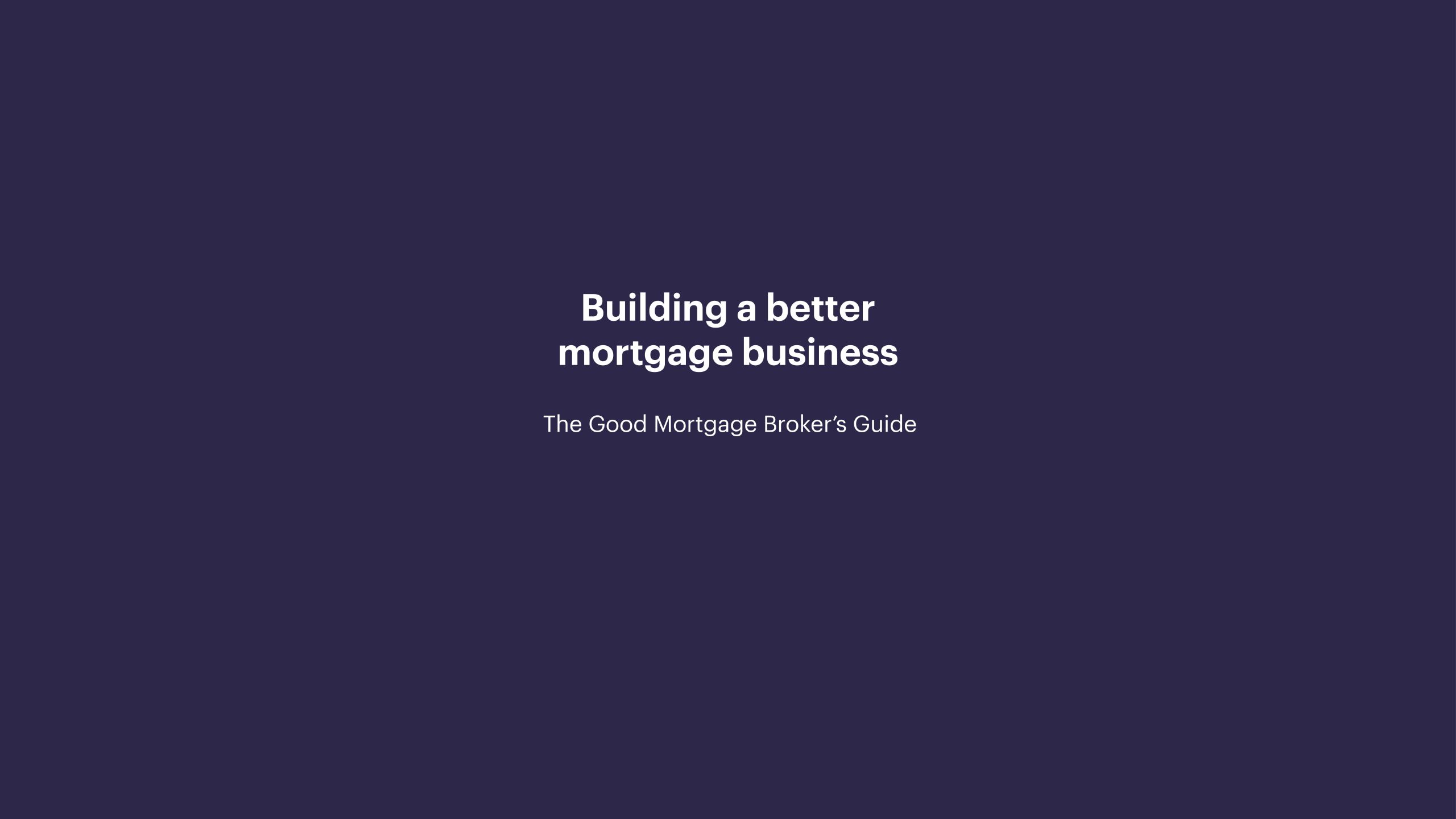

The Good Mortgage Broker's Guide gives you the information you need to successfully implement technology to transform your mortgage business.
Having the right systems in place is crucial whether you’re just starting out, driving growth, or looking to consolidate – this guide will show you how technology can streamline every stage of the mortgage process to increase your revenues and profits.

In The Good Mortgage Broker's Guide we take a look at the key considerations across a broker’s main business areas to help you transform your business, work smarter and faster and ultimately increase revenues and profits.

In The Good Mortgage Broker's Guide we take a look at the key considerations across a broker’s main business areas to help you transform your business, work smarter and faster and ultimately increase revenues and profits.


Customer Acquisition
Brokers have no business without customers, and competition for clients is growing. On one hand, tech start-ups like Habito, Trussle and other ‘robo-advisers’ are looking to disrupt the market with new online and app-based offerings, appealing to a younger generation of buyers. On the other, banks and lenders are looking to increase direct sales as the industry moves towards more execution-only business. Execution-only is one of the biggest threats facing brokers and the traditional advice model, and makes continued relationships with clients even more important than before. Both groups are also using data to gather better customer insights, target customers more effectively and tailor products and deals to individual customers’ circumstances.
Brokers face being squeezed in the middle

Beginning to end
Providing a consistent service means covering the whole customer lifecycle, from acquisition to completion and, crucially, beyond. That means providing tools for partners such as estate agents, developers, solicitors, accountants and others to generate leads. Integrating these within your broker technology platform can ensure details of leads are automatically uploaded to your system from wherever they’re sourced. Once leads come in, an effective system must ensure customer contacts are mapped, tracked and managed to keep the process moving forward.


A true end-to-end service means going further than this. Once a product is purchased, maintaining regular and meaningful client interaction helps to drive repeat business when the time to remortgage comes around. Technology can be used to help you stay in touch in an increasingly competitive market and retain your competitive edge against the threat of execution-only services and robo-advice.
A Kanban-style system which provides a visual representation of work items, progress and processes is a powerful tool to make this happen. At a glance, users can see work items and key contact points and understand where each customer is on their journey, as well as their next steps. Mortgage-specific milestones like the regulated advice meeting and approval in principle are clearly identified, and action points are prioritised to ensure opportunities aren’t wasted.
Without this in place, it’s nearly impossible for brokers to maintain contact throughout the whole customer journey. The home buying process results in long lead times: it’s usually three to four months from buyers finding a property to completion, and up to 12 months from the start of their search. Technology can play a vital role in keeping relationships alive over this extended period, developing leads and moving these seamlessly into applications and sales.

Time and again:
Remortgages and Rentention
In a competitive environment, brokers can’t afford to lose customers they’ve worked hard to acquire. Nearly every transaction currently involves advice, but the FCA’s Mortgage Market Review has changed the industry landscape. ‘Execution-only’ is set to challenge the place of brokers in the mortgage process, with any borrowers moving to execution-only, leaving an adviser. The growing popularity of longer-term products is also a threat to brokers, with fewer opportunities for remortgage transactions reducing potential business. It’s also much harder to maintain an engaged client relationship over the life of a deal. This makes retaining your current business even more vital.

Too often, manual processes and spreadsheets mean existing clients are largely forgotten. The pressure of work and servicing new business mean that, after completion, borrowers don’t hear from their adviser again until shortly before they’re due to remortgage – if at all. With automation, though, brokers can maintain the relationship with existing borrowers with almost no effort.
By integrating property valuation tools, customers can receive monthly updates on the house value, outstanding mortgage, equity position and available options, without the broker lifting a finger. When it is time for the human touch, the system automatically generates an appointment invite to discuss remortgaging in the run up to the end of discounted or fixed rate periods. The broker is then ready with all the details and the available options to review with their client.

With the right system, brokers can maximise retention and make sure every mortgage is a remortgage opportunity that’s acted on, generating long-term revenue streams and relationships that last.
Product Transfers: A case in point
Product transfers are an example of the opportunity improving the remortgage process presents, and the risks of failing to move with the times.
On the one hand, many lenders now pay procuration fees for advised clients who stay with them but switch to a better deal. That opens a valuable new source of income for those brokers who can keep customers engaged and are able to offer them a hassle-free route to a new deal when their current arrangements come to an end.
On the other hand, lenders are also sharpening up their act, making greater efforts to keep existing business and proactively contacting existing borrowers themselves, saving the need to pay broker fees. Advisers who want to retain their business will have to work harder in future – or get their systems to do the hard work for them.
Service as we know it is changing. The human touch is still needed and important but technology can help with the heavy lifting.
The next chapter
Parts 2&3 of The Good Mortgage Broker's Guide will show you how to boost productivity and choose the right technology to compete
